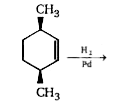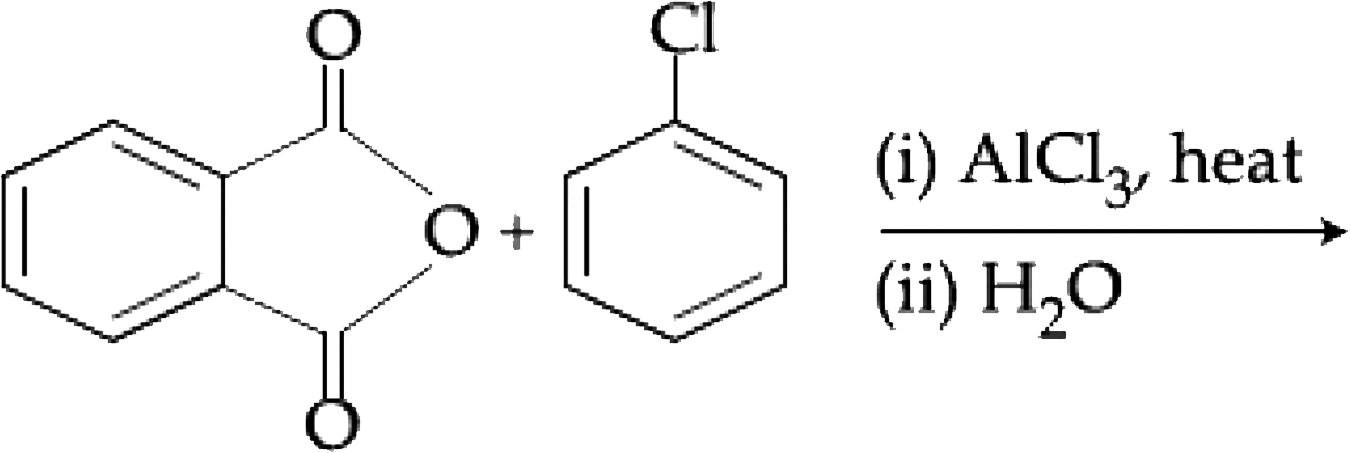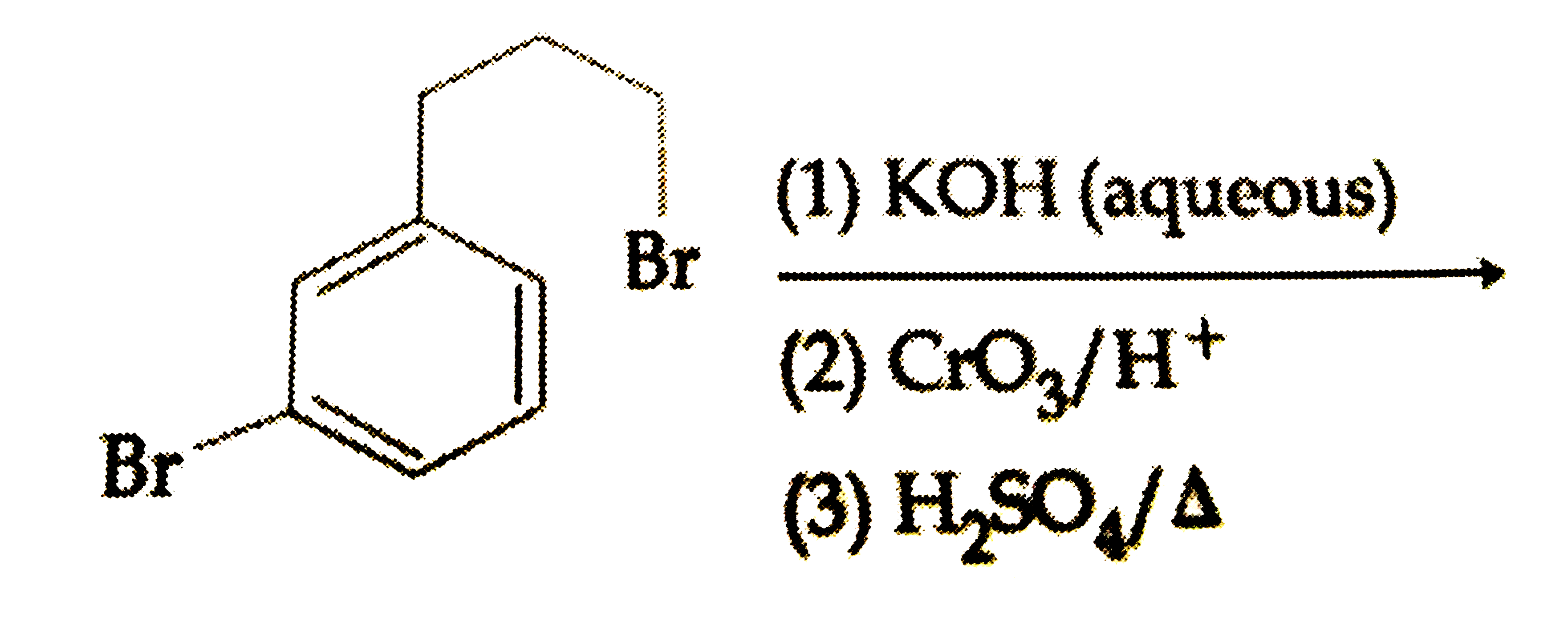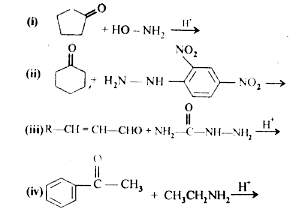The product of which of the following reactions is not a vicinal dihalide?
Reaction of ethylene glycol with P + Br2
Reaction of HCl with ethyne
Reaction of HBr with ethyne in the presence of peroxide
Reaction of Cl2 with propene at 60∘C
The correct Answer is:B
To determine which reaction produces a product that is not a vicinal dihalide, we first need to understand what vicinal dihalides are. Vicinal dihalides are compounds that have two halogen atoms (X) attached to adjacent carbon atoms in a molecule.
1. Identify the Reactions: We need to analyze the reactions given in the question. The reactions involve:
- Ethylene glycol with PBr2
- Ethyne (acetylene) with HCl
- Ethyne with HBr in the presence of peroxide
2. Reaction of Ethylene Glycol with PBr2:
- Ethylene glycol (HO-CH2-CH2-OH) reacts with PBr2.
- The hydroxyl groups (OH) are replaced by bromine (Br) atoms.
- The product formed is CH2Br-CH2Br, which has bromine atoms on adjacent carbons.
- Conclusion: This is a vicinal dihalide.
3. Reaction of Ethyne with HCl:
- Ethyne (HC≡CH) reacts with HCl.
- The reaction proceeds through the formation of a carbocation, and both chlorine atoms end up on the same carbon atom.
- The product is H2C=CCl2, which has both Cl atoms on the same carbon.
- Conclusion: This is a geminal dihalide, not a vicinal dihalide.
4. Reaction of Ethyne with HBr in the Presence of Peroxide:
- Ethyne (HC≡CH) reacts with HBr in the presence of peroxide.
- The reaction leads to the formation of vinyl bromide (H2C=CHBr) first, and then a second equivalent of HBr adds to form 1,2-dibromide (Br-CH2-CHBr).
- The product has bromine atoms on adjacent carbons.
- Conclusion: This is a vicinal dihalide.
5. Final Conclusion:
- The reaction of ethyne with HCl produces a geminal dihalide, while the other reactions produce vicinal dihalides.
- Therefore, the answer to the question is that the product of the reaction of ethyne with HCl is not a vicinal dihalide.
Summary:
The product of the reaction of ethyne with HCl is not a vicinal dihalide; it is a geminal dihalide.
---
- Ethylene glycol with PBr2
- Ethyne (acetylene) with HCl
- Ethyne with HBr in the presence of peroxide
- Ethylene glycol (HO-CH2-CH2-OH) reacts with PBr2.
- The hydroxyl groups (OH) are replaced by bromine (Br) atoms.
- The product formed is CH2Br-CH2Br, which has bromine atoms on adjacent carbons.
- Conclusion: This is a vicinal dihalide.
- Ethyne (HC≡CH) reacts with HCl.
- The reaction proceeds through the formation of a carbocation, and both chlorine atoms end up on the same carbon atom.
- The product is H2C=CCl2, which has both Cl atoms on the same carbon.
- Conclusion: This is a geminal dihalide, not a vicinal dihalide.
- Ethyne (HC≡CH) reacts with HBr in the presence of peroxide.
- The reaction leads to the formation of vinyl bromide (H2C=CHBr) first, and then a second equivalent of HBr adds to form 1,2-dibromide (Br-CH2-CHBr).
- The product has bromine atoms on adjacent carbons.
- Conclusion: This is a vicinal dihalide.
- The reaction of ethyne with HCl produces a geminal dihalide, while the other reactions produce vicinal dihalides.
- Therefore, the answer to the question is that the product of the reaction of ethyne with HCl is not a vicinal dihalide.
The product of the reaction of ethyne with HCl is not a vicinal dihalide; it is a geminal dihalide.
Topper's Solved these Questions
- HALOALKANES & HALOARENES BOOK - VMC MODULES ENGLISHCHAPTER - HALOALKANES & HALOARENES EXERCISE - ENABLE
99 Videos
- HALOALKANES & HALOARENES BOOK - VMC MODULES ENGLISHCHAPTER - HALOALKANES & HALOARENES EXERCISE - EFFICIENT
100 Videos
- ENVIRONMENTAL CHEMISTRYBOOK - VMC MODULES ENGLISHCHAPTER - ENVIRONMENTAL CHEMISTRYEXERCISE - JEE Main (Archive)
39 Videos
- HALOALKANES AND HALOARENESBOOK - VMC MODULES ENGLISHCHAPTER - HALOALKANES AND HALOARENESEXERCISE - IN-CHAPTER EXERCISE - F
6 Videos
Similar Questions
Knowledge Check
Product of which of the following reactions, is racemic mixture ?
A B
B C
C D
D
In which of the following reactions is benzoic acid the major product?
A B
B C
C D
D
Which of the following reactions give meso product?
A B
B C
C D
D




_2019_CBT3_E01_001_Q01.png)


